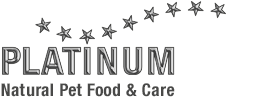
Specific terms made easy: what is actually written on the dog food declaration?
Certainly, you’ve already heard of the terms “crude fiber”, “crude fat” and “crude ash”. We want to explain these terms to you in the frame of our consulting.
Crude ash
The term can be fragmented into “crude” and “ash”. And indeed, it’s about burning: a sample of the food gets heated and ashed at 550°C in the muffle furnace for over 6 hours to determine the crude ash. The not flammable and remaining rest is called “crude ash”. This consists of minerals (like the vital micronutrients) and other inorganic substances. The amount of crude ash in dry dog food should be under 10 percentages and in wet dog food under 4 percentages.
Often the opinion, that the amount should be as low as possible, is represented. But it should be differentiated between inorganic impurity and important minerals. A low value can be reached because of a small addition of needed minerals and therefore is not necessarily a sign of quality. On the contrary, a really high value could indicate impurity.
Crude fiber
Also showed in percentages, “crude fiber” describes the part of not digestible plant fiber in the dog food. Fiber like cellulose in a regulated amount is important for the dog’s nutrition. It stimulates the action of the bowels and forms the excrements.
But if the amount crude fiber in the food is too high, the dogs aren’t able to digest it very well, which then leads to flatulence and segregating a high amount of excrements. Fiber enlarges the volume of nutrition, without being an energy carrier and increases the dwell time in the stomach, so the resting period should be definitely longer after feeding the dog food with a high amount of crude fiber.
In addition, the dog needs more hydration, because the fiber is able to bundle the hundredfold of the tare weight onto water. Dry dog food ideally should have 2 to 3 percentages of crude fiber, wet dog food ideally offers about 0.5 percentages.
Crude fat
The amount of crude fat, which is also listed in percentages, gives information about how energy-rich the dog food is. Besides that, fat also delivers important essential fatty acids. A high-quality dry dog food should have a value of 6 to 17 percentages of crude fat, the minimal value is at 5 percentages. Wet dog food should offer a value between 3 and 11 percentages.
But only observing the percentages is not significant. The quality of the fats is depending on source and preparation of the resources and the absolute and relative amount of saturated, monounsaturated and polyunsaturated fatty acids. This isn’t apparent by the label, it only can be estimated by the listed ingredients and the way of preparation.














































